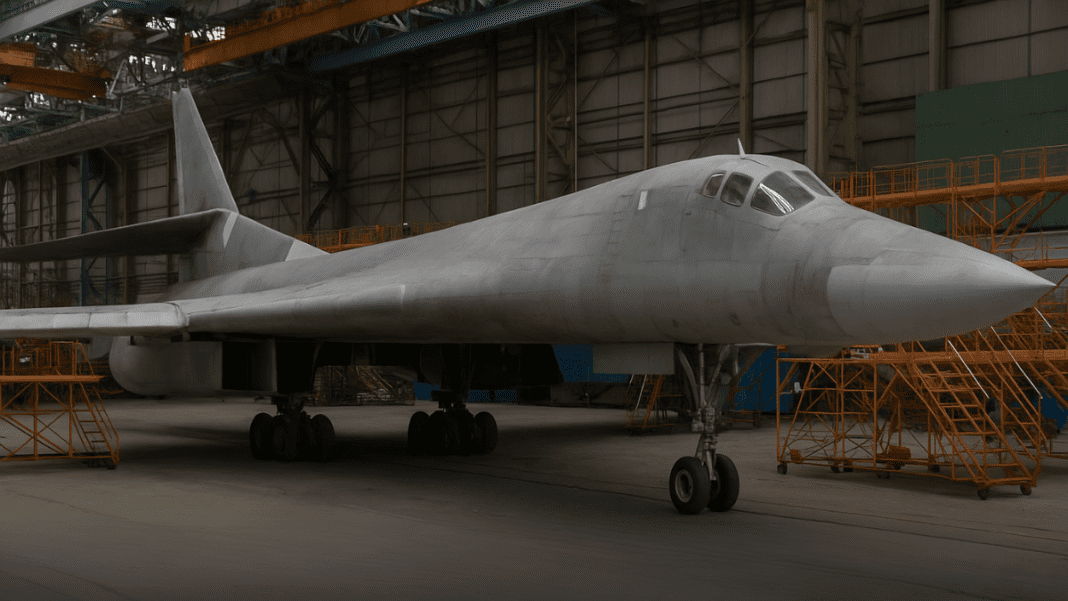Russia’s efforts to build new warplanes and military aircraft have hit a serious roadblock. The country is facing two major problems: not enough workers and not enough parts.
Russia’s Warplane Production Faces Serious Roadblocks
This has created a situation where warplane factories cannot operate as expected.
A key site for warplane production is the Kazan Aviation Plant, located in the republic of Tatarstan. This factory is currently the only place in the country that can replace aircraft lost in recent Ukrainian drone attacks. These attacks, which happened in June under the name Operation Spiderweb, reportedly damaged or destroyed around 40 military planes.
Despite satellite images showing the Kazan plant expanding with new buildings, actual aircraft production is moving slowly. In 2024, only two Tu-160M2 and two Tu-160M bombers have been completed. These planes are important for Russia’s air force, especially since they can launch cruise missiles. However, just building four aircraft in one year signals deeper issues.
Russia unleashes largest air raid of the war, Ukraine loses F-16 hero in battle
Plans were announced earlier to increase the output of civilian aircraft such as the Tu-214, with targets set for 2025 and beyond. But experts say the lack of trained staff and spare parts will make meeting these goals difficult.
Sanctions and Labor Shortages Cripple Warplane Progress
One of the biggest reasons behind Russia’s slow progress is international sanctions. These sanctions have made it harder for Russia to import key parts needed for building and maintaining aircraft. Before the war in Ukraine, many of these parts were imported from abroad. Now, because of restrictions, those supplies have nearly stopped.
There is also a labor problem. Many skilled workers who were experienced in aircraft production are either no longer available or are retiring. At the same time, finding new workers with the right skills has proven difficult. This has slowed down even basic tasks in the production lines.
Crippling US Sanctions Endanger SU-57 Fighter Jet Program of Russia
Even though new workshops have been created, including three revamped ones for Tu-160 bombers, they haven’t been enough to speed up production. In fact, despite efforts to increase the number of Sukhoi fighter jets, Russia is reportedly able to produce only one such jet every one to two months. That’s far below what is needed to keep up with military demands.
Another setback is the decision to lay off about 1,500 staff members in the management side of the industry. While this may be an attempt to cut costs or shift resources to other areas, it has added to the pressure on production teams already struggling to meet targets.
Satellite Images Show Factory Growth But Not Output
Satellite pictures taken between mid-2024 and May 2025 have shown new buildings and construction at the Kazan Aviation Plant. At least five new buildings have been added. This might look like progress on the surface, but the number of planes actually being built tells a different story.
The Kazan plant is not only responsible for making new aircraft like the Tu-160M2 and Tu-22M3 but also works on helicopters and some civilian planes. Even with this wide range of responsibilities, the plant’s output remains low.
According to reports, the plant’s production rate is unclear because some of the aircraft delivered in 2024 may have been under construction for a long time, even before the war started. This makes it difficult to measure how effective the new expansions really are.
Arctic Arsenal Expands: Russia Builds 50+ Missile Storage Bunkers Near NATO Airspace
Supply routes from neighboring countries, which used to help provide parts and tools, have also slowed down. Transport and logistics have become more difficult due to tighter border checks and fears that military materials could be intercepted or attacked.
Even though the government has increased military spending in recent years, maintaining steady aircraft production has remained a challenge. Reports suggest that funds and materials are now being shifted toward other military programs, like drone and weapons production. This change in focus may be another reason why warplane construction is not a top priority anymore.

